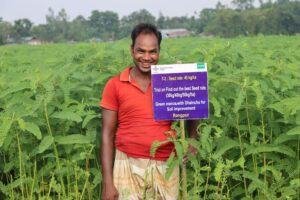This issue’s Rice facts presents some key information on the rice situation in Asia and selected rice-producing countries in sub-Saharan Africa—where the International Rice Research Institute (IRRI) is stepping up its efforts to improve rice production and reduce poverty. For an outline of IRRI’s new strategic plan and associated research agenda, see Bringing hope, improving lives on pages 10–15. The table also presents telling information on poverty and health in the listed countries.
By 2015, the global rice-eating population is projected to consume over 50 million tons more than it did in 2005, with significant increases in South and Southeast Asia and sub-Saharan Africa.
Most East Asian countries will reduce consumption, but it is unlikely there will be any surplus rice available for the world market from this region. The high cost of production there means that East Asian rice would be too expensive for the countries in need of more rice to obtain it. So, reduced consumption in East Asia is likely to lead to a reduction in rice area there as farmers switch to other high-value crops.

Areas where rice is grown mostly under rainfed (rather than irrigated) conditions tend to correspond to low yields and extensive poverty and malnutrition.
Despite Thailand being the world’s largest rice exporter, average yields are the second lowest in Asia. This is largely because most rice is grown under rainfed conditions. However, relatively large farm sizes and the production for export of high-value varieties with superior grain quality mean that poverty is diminishing in many Thai rice areas.
Although current rice consumption in Africa is lower than in Asia, sub-Saharan Africa’s consumption will rise by around 50% by 2015—the greatest proportional increase worldwide. In this region, almost half of rice needs are met from imports. Nigeria is already the world’s second-largest rice importer.
Low African yields present both a challenge and a great opportunity. Since there is a large gap between actual and potential yield, a large percentage increase in yield and overall production is possible with the adoption of improved technology.
A high proportion of the population in almost every listed country—with the exception of some in East Asia—suffers from serious health problems due to undernourishment and underweight. The proportion of the population living in poverty also remains very high.
This and a host of further information presented here clearly demonstrate that a continued, concerted rice research effort is essential if we are to help poor rice consumers and producers improve their lives.









